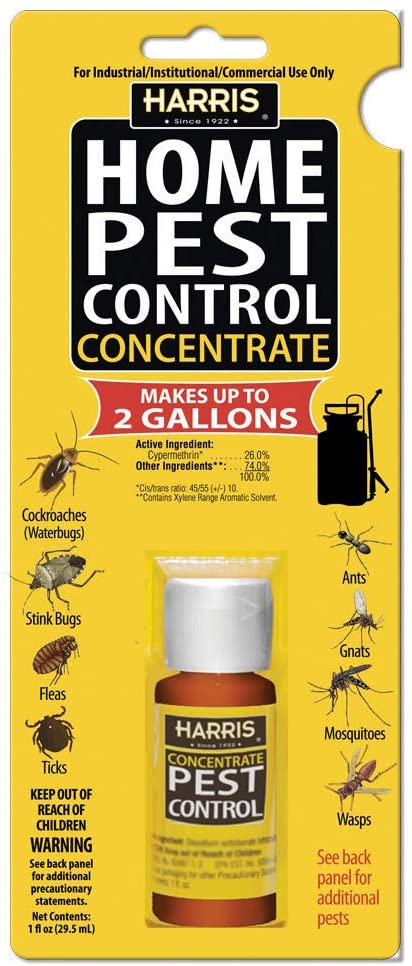Bed Pest Therapy Breakdown: Comparing Chemical Vs. Non-Chemical Solutions
In the world of insect control, specifically when managing the relentless problem of bed insects, the option in between chemical and non-chemical treatment options can be a pivotal one. Both methods provide distinct advantages and downsides, affecting factors such as performance, safety and security considerations, and general cost. By checking out the nuanced information of each technique, a clearer understanding of which course to pursue in attending to a bed pest problem can be achieved.
Effectiveness of Chemical Therapies
Chemical therapies for bed bug infestations have been extensively identified for their powerful and fast efficiency in eradicating these pests. When thinking about the effectiveness of chemical treatments, it is critical to comprehend that they can give a detailed and fast remedy to a bed insect problem.
Moreover, chemical therapies have the advantage of offering residual impacts, implying that they can continue to eliminate bed pests also after the initial application. This recurring activity is especially useful in combating any type of prospective re-infestations. Furthermore, the rapid activity of chemical treatments can bring relief to people encountering extreme bed bug problems, permitting them to reclaim control of their space swiftly.
Safety And Security Interest In Chemical Solutions
When making use of chemical remedies for bed insect therapy is making certain the security of residents and the setting,One important aspect that needs cautious factor to consider. While chemical treatments can be effective in getting rid of bed pests, they might posture dangers if not taken care of properly. Among the primary safety interest in chemical options is the potential damage they can cause to human health and wellness. Exposure to certain chemicals used in bed insect therapies can bring about breathing concerns, skin irritation, or other damaging reactions, specifically in individuals with pre-existing problems or sensitivities. In addition, improper application or dosage of chemical pesticides can lead to harmful deposits remaining in the cured location, presenting long-lasting health threats to passengers.
In addition, the environmental influence of chemical services is an additional significant consideration. Some chemicals made use of in bed bug treatments might be unsafe to helpful pests, wild animals, and ecosystems if they seep into the dirt or water systems. It is vital to utilize chemical therapies judiciously, following safety and security standards, and considering much less toxic options to alleviate these risks and guarantee the efficient and risk-free management of bed bug invasions.
Benefits of Non-Chemical Techniques
Thinking about the prospective safety worries and ecological influence connected with chemical remedies for bed insect therapy, checking out non-chemical approaches presents an appealing option with a number of unique advantages. Non-chemical techniques provide a much safer choice for homes, particularly those with pet dogs, youngsters, or people conscious severe chemicals. These techniques get rid of the dangers of exposure to poisonous materials, lowering the capacity for negative wellness effects. Furthermore, non-chemical therapies are eco-friendly, as they do not add to air or water contamination, making them a sustainable selection for parasite control.
In addition, non-chemical solutions can be efficient in targeting bed bugs, including hard-to-reach locations where chemical treatments may not pass through - A1 exterminators charlotte nc. Approaches such as warmth treatment, vacuuming, steam cleansing, and mattress coverings supply extensive eradication without the use of damaging chemicals.
Limitations of Non-Chemical Treatments

Additionally, non-chemical therapies commonly need multiple applications to accomplish successful eradication. This can be taxing and might not always assure complete removal of all bed insects and their eggs, specifically in hard-to-reach or concealed areas.
In addition, the success of non-chemical treatments greatly relies upon proper application and thoroughness, which can be challenging for individuals without professional competence. Insufficient application of non-chemical techniques might lead to insufficient eradication, causing relentless infestations and the need for extra treatments.
For that reason, while non-chemical treatments have their benefits, it is vital to recognize these restrictions and consider them when identifying one of the most efficient method for handling bed bug problems.
Expense Contrast: Chemical Vs. Non-Chemical Options
Provided the constraints connected with non-chemical therapies, an essential element to examine in the context of bed pest management is the expense contrast between chemical and non-chemical you can check here options. Chemical therapies commonly include the application of insecticides by professionals, which can range from $250 to $900 per space, depending upon the seriousness of the infestation and the size of the location to be dealt with. In contrast, non-chemical treatments like warmth therapy or steam can be much more expensive, with costs varying from $1,000 to $6,000 for a whole home. While the first price of chemical therapies might seem reduced, multiple treatments might be required to fully remove the problem, potentially boosting the general expense. On the other hand, non-chemical choices might supply a more green and lasting option, although they can be cost-prohibitive for some people. Inevitably, when thinking about the expense of bed pest therapy options, it is essential to consider the upfront expenses versus the effectiveness and long-lasting sustainability of the chosen technique.
Conclusion

Considering the possible safety and security problems and environmental influence associated with chemical options for bed image source bug treatment, discovering non-chemical methods presents a promising option with numerous distinctive benefits.Offered the restrictions connected with non-chemical therapies, a necessary element to evaluate in the context of bed pest management is the expense comparison between chemical and non-chemical alternatives. In contrast, non-chemical therapies like warmth treatment or vapor can be much more expensive, with expenses ranging from $1,000 to $6,000 for a whole home. While the preliminary price of chemical treatments may appear reduced, several therapies may be required to completely eliminate the problem, potentially raising the total price.In verdict, when comparing chemical and non-chemical bed bug treatment choices, it is crucial to consider efficiency, safety and security, benefits, limitations, and cost.